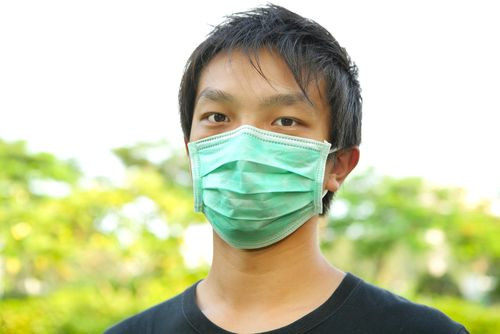Bubonic Plague In China? Not Only Is It Here, There, And Everywhere, But It’s Treatable, Too

A 38-year-old man who had been in contact with a dead marmot in China's Yumen City has died of plague, the state media reported last week. Local government officials have placed a total of 151 people in quarantine and under medical observation. None of them has reported symptoms of the disease, yet 10 checkpoints continue to block off parts of the city, home to nearly 180,000 people in Gansu Province. BBC reported the deputy head of the hospital where the man died said the victim had arrived with an increased heart-rate and seemed to be slipping into shock.
Most people think of bubonic plague as an illness from the faraway past; it killed millions of people in Europe during the 14th century and tens of thousands in China during the 19th century. Yet, plague remains endemic in northwest China and still occurs on occasion in the U.S. Plague first entered the U.S. in 1900 and between then and 2010, about 1,000 cases have occurred within these border. In recent decades, seven human plague cases are reported each year on average, according to the Centers for Disease Control and Prevention.
If caught early, this bacterial disease can be successfully treated with modern antibiotics. The plague bacteria known as Yersinia pestis primarily affects wild rodents and is spread among rodents by fleas. People who are bitten by infected fleas usually develop a bubonic form of the disease, which is characterized by a bubo — a swelling of the lymph node. The first symptoms of bubonic plague appear anywhere from one week to 10 days after infection. If untreated in the early stages, bacteria may reach the lungs and then the patient develops pneumonic plague, which is transmissible from person to person and usually spread by coughing.
Pneumonic plague ranks among the deadliest infectious diseases, with many patients dying within 24 hours of infection. No matter how soon treatment is started, the mortality rate is high.
Worldwide, between 1,000 and 2,000 cases of bubonic plague are reported to the World Health Organization (WHO) each year, though the true number is likely much higher. The last outbreak in China occurred in August 2009 and affected a cluster of about 12 people in the remote town of Ziketan in Qinghai province. Most of the patients were affected after attending the funeral of the first victim, a 32 year old male herdsman, who developed fever and died en route to the hospital. China has an established national surveillance network for plague, with prepared supplies in high-risk areas.
In the U.S., state health departments along with the CDC regularly test rodent populations to track the spread of bacteria in the wild. If infected rodents are found, insecticide will be sprayed and signs posted to warn residents away from the area. Health officials say the bacteria is generally isolated to rural areas and usually stays there. The last urban outbreak of the plague in the U.S. occurred in Los Angeles during 1924 and 1925. Over 80 percent of U.S. plague cases have been the bubonic form.
Currently, plague is most commonly found in sub-Saharan Africa and Madagascar, which account for over 95 percent of reported cases. The most recent epidemic occurred in Vietnam during the war years of the 1960s and 1970s.



























